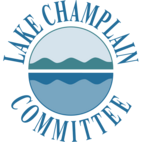LCC Lake Ripples - February 2011 E-News
LCC's E-News Bulletin
EPA Repeals Approval of Lake Champlain TMDL

Following on a 2008 lawsuit from the Conservation Law Foundation(CLF) the Environmental Protection Agency (EPA) has agreed to rewrite the Lake Champlain phosphorus budget known as a TMDL. The TMDL establishes an amount of phosphorus that can be absorbed by the lake and then allocates allowable discharges between point sources like wastewater treatment facilities and non-point sources such as agricultural and developed land run off. About 5% of phosphorus loading to Lake Champlain comes from wastewater treatment facilities.
EPA determined that the existing TMDL did not include an adequate margin of safety and did not provide reasonable assurance that sufficient reductions in non-point source discharges could be achieved to allow more discharge from wastewater treatment facilities...MORE
LCC Advocating to Limit Phosphorus Lawn Fertilizer
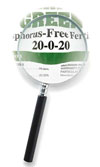
The Vermont legislature is considering bills (H. 26 and S. 35) that would limit the amount of lawn fertilizers used in the state. Frequently, homeowners apply fertilizer in excess of what is needed by lawns. Excess fertilizer has detrimental affects on water quality. Phosphorus from fertilizer can reach water when some of it is spilled on sidewalks and driveways or when fertilized soil erodes. Once in the water it promotes algae blooms.
The Lake Champlain Committee has long advocated for such legislation. In 2006, our efforts led to the legislature approving an education campaign about lawn fertilizer. This became the “Don’t P on Your Lawn” campaign initiated by LCC, the Lake Champlain Basin Program, Vermont Agricultural and Natural Resource Agencies, and New York and Vermont Extension Services....MORE
LCC Receives Grant for Invasive Species Work
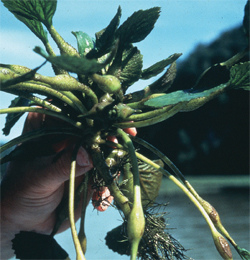
The Lake Champlain Committee and environmental consulting firm Arrowwood Environmental have won a competitive grant from the Lake Champlain Basin Program to conduct an invasive species survey of Missisquoi Bay. In recent years, Missisquoi Bay has been the site of anumber of new invasions. In 2005 water chestnut (Trapa natans) was found in the Misssisquoi National Wildlife Refuge. In 2009 variable-leaved water milfoil (Myriophyllum heterophyllum) was discovered. Variable-leaved water milfoil has not been seen in the Quebec portion of Missisquoi Bay, but surveys in 2010 left some ambiguity regarding the magnitude of the infestation in the United States portion. “A more comprehensive understanding of the extent and distribution of invasive species throughout the Bay and the efforts necessary to control them will help us prioritize our control and eradication efforts,” said Mark Sweeny, manager of the Missisquoi National Wildlife Refuge. “Both the Lake Champlain Committee and Arrowwood Environmental have strong reputations and we anticipate excellent work from the collaboration between them.” Project work will take place spring through fall of this year.
New Lake Clean-up Plan Available Online
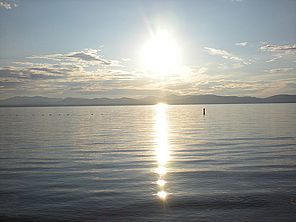
A new version of Opportunities for Action has been released. Opportunities for Action is the management plan that guides how federal and state resources are spent to protect and restore Lake Champlain. Regular revisions to Opportunities for Action are required under the Lake Champlain Special Designation Act that provides much of the funding for work on the lake. The newest version, released in December 2010, represents the third edition of the plan...MORE
LCC Secures Grant for Water Conservation Program
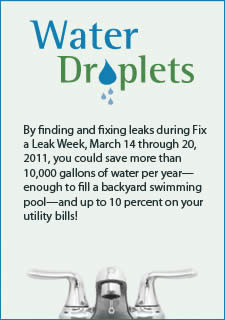
LCC has been awarded a pollution prevention grant in the most recent round of competitive funding from the Lake Champlain Basin Program. LCC will conduct a water conservation education and outreach program working with multiple partners and in multiple venues to improve water quality in Lake Champlain. Preventing excess water use reduces treatment costs at waste water treatment facilities, increases treatment efficiency, and saves energy. “Water usage is a significant cost for many businesses yet water conservation is often overlooked in the northeast because water is so abundant” notes Tom Torti, President of the Lake Champlain Regional Chamber of Commerce. The Chamber is one of LCC’s water conservation project partners. “LCC’s water conservation program will help businesses understand the link between water conservation and water quality and provide them with useful, cost-effective steps they can take to both save water and save money.”Water conservation can also reduce imports of phosphorus into the Lake Champlain Basin. Zinc orthophosphate is added to drinking water at intakes to prevent lead from leaching from old pipes. Water wasted in leaks and excess use still has to be treated necessitating additional inputs of zinc orthosphosphate.
What to Do With Old Pharmaceuticals?

Throughout the country municipalities and states have struggled over what to do with old or unneeded pharmaceuticals. Too often, they are simply flushed down the toilet, but sewage treatment plants aren’t necessarily equipped to remove them. As a result, the drugs end up in the water where they are still active. Additionally, unused medications often end up on the street, being sold illicitly.
The Vermont Legislature is considering a first step in developing a statewide policy for disposal of pharmaceuticals (H. 11). The Lake Champlain Committee has offered testimony in support of the bill...MORE
Calling All Carpenters and Electricians
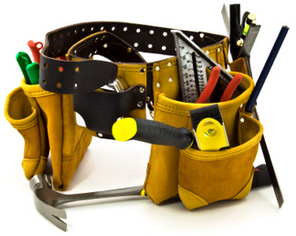
If you’re a skilled carpenter or certified electrician with time on your hands we could use your help! LCC is looking for several volunteers to tackle an interior job building walls and work counters and setting up wiring for our office space. The project work will likely take place late winter through early spring. Interested individuals should contact LCC Executive Director Lori Fisher at lorif@lakechamplaincommittee.org or (802) 658-1414.
Natural History Note – Lake Ice
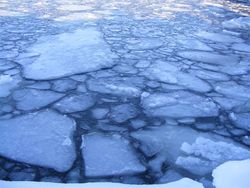
Winter often offers a frozen lake for skating, fishing, and myriad other activities. Throughout the winter you can watch for changes in the ice as it continues to grow, shrink, and move. Three phenomena that demonstrate the dynamic nature of ice are tension cracks, pressure ridges, and ice ramparts.
Tension cracks form when the ice molecules pull apart as the ice continues to cool. As the ice expands, the molecules within the sheet pull away from each other creating tension...MORE
Lake Look -Counter Currents
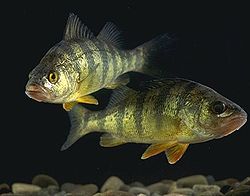
Take a deep breath. In. Your lungs fill with cool, oxygen rich air. Out. The exhaled air has less oxygen, more carbon dioxide. The average adult at rest breathes twelve times per minute, all for the purpose of exchanging gases in the lungs, to bring oxygen to our blood cells. Fish need the same oxygen, but it is much more difficult to get from water. Respiration is the process by which gases are exchanged between the body and the outside environment. Respiration has two principal components: breathing or ventilation – the movement of an external medium (air or water), and gas exchange – the trade of oxygen and carbon dioxide between blood and that medium. Both ventilation and gas exchange are more difficult in water than in air...MORE
Ripple Effect

Let us know if there is anyone whom you think would enjoy getting our Ripples E-News bulletins and please, forward it on to colleagues, friends, and relatives that share your love of the lake. We welcome your comments and suggestions for topics to include in future issues. Click here to send us your feedback. Thanks!
Moving? Changing Email Addresses?
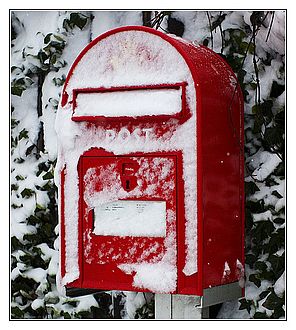
If you’ve had an address change recently, please send us an email so we can update your files and ensure you receive news on lake issues and LCC’s work. Our primary form of communication with members is through email. By mailing electronically we save time and resources and reinforce the stewardship ethic of our mission. We don’t give away or sell email addresses. To ensure that our email messages get through to your inbox, please add lcc@lakechamplaincommittee.org and the domainenews.lakechamplaincommittee.org to your safe/allowed list and address book. Thanks!
Lake Champlain Committee Board of Directors:
Alan Booth (Plattsburgh, NY), Susan Coffey (Plattsburgh, NY), Megan
Epler Wood (Burlington, VT), Gary Kjelleren (South Hero, VT), Sharon
Murray (Bolton, VT), Ann Ruzow Holland (Essex, NY), Jim Schweithelm
(Burlington, VT), Mary Van Vleck (Charlotte, VT).
Lake Champlain Committee Staff:
Lori Fisher, Executive Director
Caitlin Kincaid, Office Manager
Mike Winslow, Staff Scientist
LCC Links
- Join/Donate
